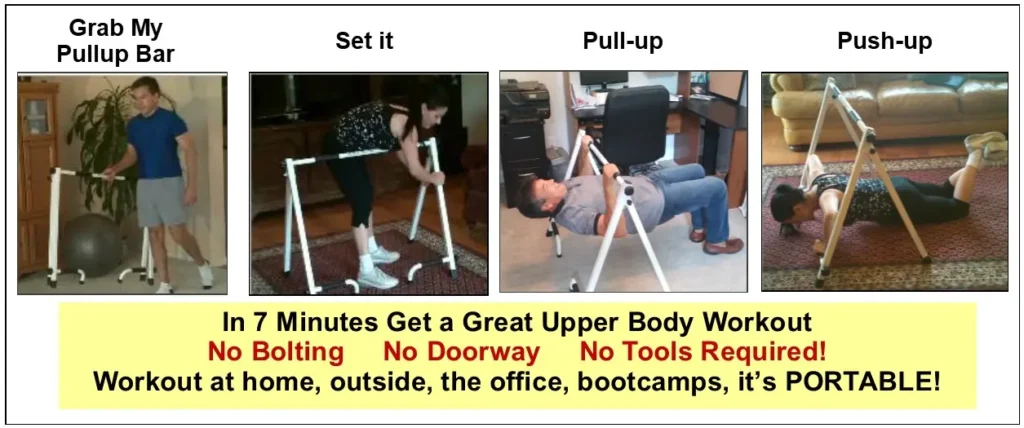Blog
Best Position to Sleep In
Is it best to sleep on your back, side, stomach? Is Spooning or Popsicle sticks a better position?
If you think about it, you spend about a third of your life in bed, lying down, so make yourself comfortable!
Let me start by saying sleeping on your back is the best position.
This is because you are basically in anatomical position, which virtually eliminates any muscle contraction or activity. This makes it easier for your physical body to relax and reduces potential muscle imbalance, which is an underlying cause to many unexplained aches and pains.
Sleeping on your stomach requires you to have your head turned to the side for 6-8 hours. You wouldn’t sit at a desk for a few hours with the monitor stationed at  your side, while your torso is positioned straight ahead, would you? NO!
your side, while your torso is positioned straight ahead, would you? NO!
This is also why you point your recliner towards your TV, so I wouldn’t recommend sleeping on Your Tummy!
Side sleeping isn’t as bad for your neck, but there are a couple of things to consider. Are you lying in the fetal position with your knees and hips bent? That’s probably not good for anyone struggling with low back pain. This is because, when you sleep in the fetal position, you’re basically replicating the sitting position for 6-8 hours. Do you think that is helpful for any struggling with low back pain? NO!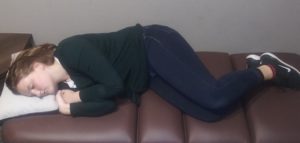
When you sit, you shorten (contract) your hip flexors and hamstrings. Do that long enough and you literally shorten those muscles, while at the same time lengthen their opposing muscles. Every muscle has an antagonist or opposing muscle that pulls or moves the body in the opposite direction. When one set of muscles contract and pull your body one way, the opposing muscles have to relax and allow for the body to move. Than the opposing muscle contracts and pulls your body in the opposite direction. Think of bending and straightening your knees, elbows or tuning your neck or torso – the muscles around any join must work in unison.
The problem for your hip flexors and hamstrings are that they attach and pull on your pelvis and lumbar discs from different directions. Therefore, any muscle imbalance in your lower back region creates instability, which leads to pain and discomfort. This basic principle of muscle imbalance applies to any group of muscles, including the muscles around your neck, shoulders, knees and elbows.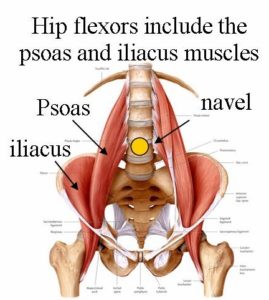
Secondly, when you sleep on your side, your shoulders are rolled forward, which shortens your chest muscles and leads to muscle imbalance and potential aches and pains to your upper back, neck and possibly your shoulder area.
No, you don’t carry your stress in your traps and upper back, as some people like to say. It’s simply muscle imbalance caused by the continued shortening of your pec muscles, and your upper back muscles always being stretched. You need to contract the muscle to both sides of your upper torso.
You wouldn’t exercise your biceps without training your triceps, nor should you do push-ups and neglect pull-ups, otherwise you will be creating muscle imbalance.
Thank about how many hours you spend on your smartphone, laptop, steering wheel, cooking, etcetera. The point is all that continual time with your shoulders pulled forward further contributes to muscle imbalance to your upper torso. Don’t exacerbate this muscle imbalance by than going home or to the gym and doing primarily or only chest exercises, like pushups – while neglecting to contract the muscles of your upper back with an equal amount of pulling or rowing exercises (pull-ups, inverted pull-ups).
If you must sleep on your side, grab a nice size pillow and wrap your arms around it (Spooning can be applied here). This can help keep your shoulders pulled back and help prevent them from collapsing as much. Also, try and keep your hips and knees as straight as you can. They don’t have to be board straight, just don’t bend them like you are sitting.
Fyi…to all you who sleep with your arms over your head or underneath your head. Try and see how long you can do that comfortably when you’re awake? You might be surprised to see how your shoulder feels after 30 minutes. I haven’t even discussed the added pressure of your bodyweight all on one shoulder, and how that can create discomfort, as well.
Why is Sleeping Flat on Your Back Difficult for Some?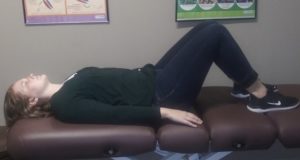
More than likely it’s because you’ve developed tight hip flexors and tight hamstrings, and because of that, they don’t like being stretched-back to their normal length. The muscles of your lower body have adapted to that sitting position and have literally become shorter. This is why it feels better to bend your knees when lying flat.
Think of muscles like guitar strings. They need to be wound a certain tension to play pretty music. If a muscle is wound too tight, (sitting too long, shoulders pulled forward, head down, legs crossed, etc) it can create problems around that joint. I’m not talking about muscle flexibility or tone – I’m talking about the fine tuning of your spindle cells and golgi tendons, which are the neurological inputs that are responsible for the stretch and shortening of a muscle. Sorry for getting too technical, so I’ll stop here.
Anyway, if you have a history of sitting for extended periods of time, as a result of work or pleasure – you may have a harder time lying on your back with your legs straight. Therefore, to reduce the possible discomfort in your low back, place a pillow under your knees. Start out with a larger pillow, but hopefully you will gradually reduce the size of your knee pillow after a while.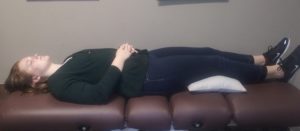
This is the Popsicle position – 2 sticks, sleeping side-by-side, not touching each other, like a Popsicle.
Yes, Sleeping on your back does have some drawbacks like SNORING. What can I say? If you are over-weight, struggling with diabetes, digestive problems and/or allergies your snoring can be helped by addressing your overall health, especially Gut health.
What About a Pillow for My Head?
Everyone knows you want a pillow thick enough when you sleep on our side to keep your neck and spine in alignment. The same rule applies to sleeping on your back. If your pillow is too thick, it will cause your head to push forward and down, and take you out of anatomical position or alignment. This is ears over your shoulders, shoulders over your hips and hips over your ankles.
Think about sleeping on your back with a pillow that is too thick. It will simulate as if you are looking down at your laptop or smartphone for 6-8 hours, which isn’t comfortable.
In conclusion, I believe getting a good night sleep begins with finding a good body position that makes you comfortable. Next you want a good mental outlook before bed. This gives your subconscious mind something good to chew on for the next 6-8 hours, as opposed to thinking about the gloom and doom of tomorrow. Remember, your subconscious never sleeps!


